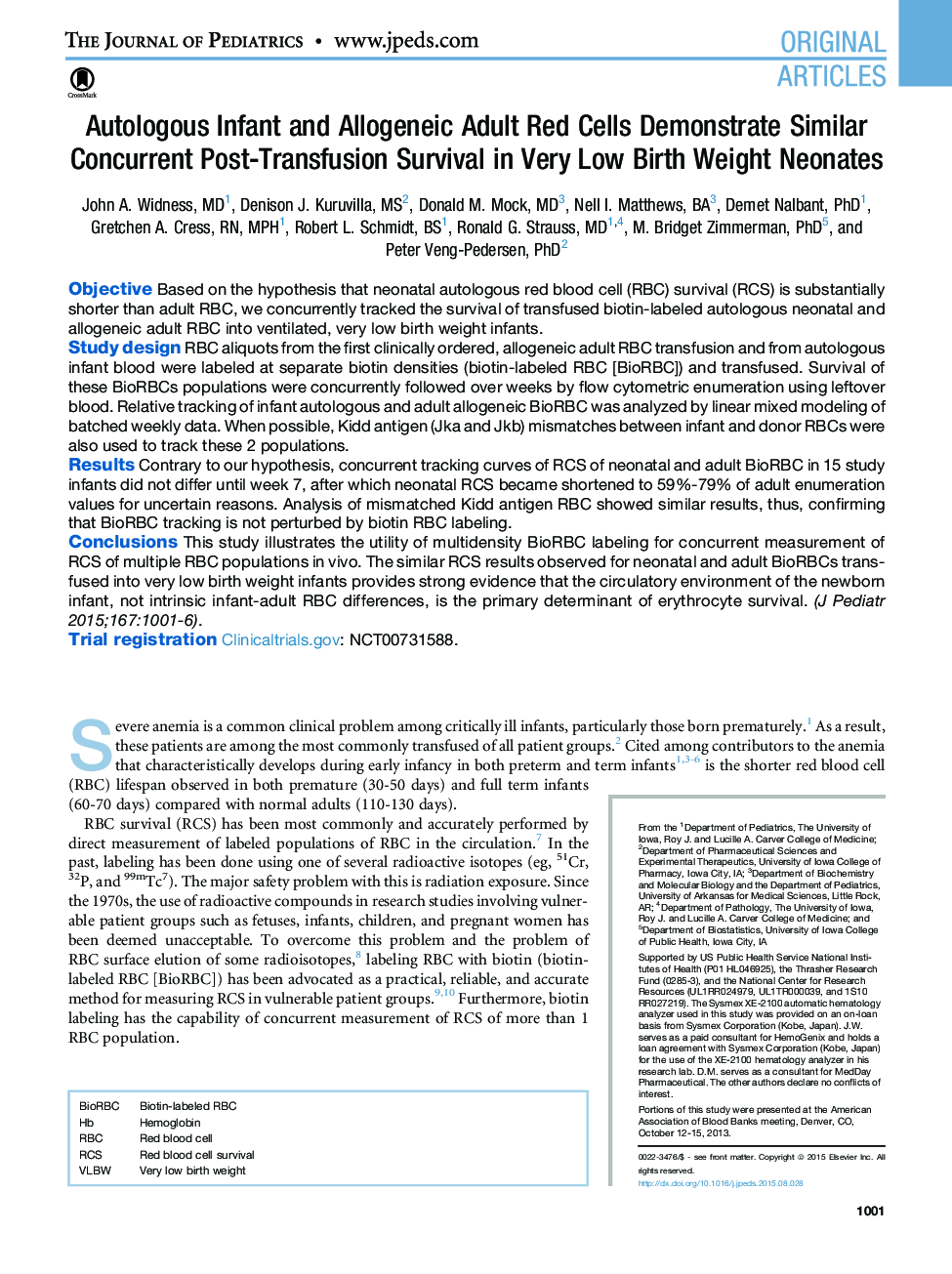| Article ID | Journal | Published Year | Pages | File Type |
|---|---|---|---|---|
| 4164713 | The Journal of Pediatrics | 2015 | 6 Pages |
ObjectiveBased on the hypothesis that neonatal autologous red blood cell (RBC) survival (RCS) is substantially shorter than adult RBC, we concurrently tracked the survival of transfused biotin-labeled autologous neonatal and allogeneic adult RBC into ventilated, very low birth weight infants.Study designRBC aliquots from the first clinically ordered, allogeneic adult RBC transfusion and from autologous infant blood were labeled at separate biotin densities (biotin-labeled RBC [BioRBC]) and transfused. Survival of these BioRBCs populations were concurrently followed over weeks by flow cytometric enumeration using leftover blood. Relative tracking of infant autologous and adult allogeneic BioRBC was analyzed by linear mixed modeling of batched weekly data. When possible, Kidd antigen (Jka and Jkb) mismatches between infant and donor RBCs were also used to track these 2 populations.ResultsContrary to our hypothesis, concurrent tracking curves of RCS of neonatal and adult BioRBC in 15 study infants did not differ until week 7, after which neonatal RCS became shortened to 59%-79% of adult enumeration values for uncertain reasons. Analysis of mismatched Kidd antigen RBC showed similar results, thus, confirming that BioRBC tracking is not perturbed by biotin RBC labeling.ConclusionsThis study illustrates the utility of multidensity BioRBC labeling for concurrent measurement of RCS of multiple RBC populations in vivo. The similar RCS results observed for neonatal and adult BioRBCs transfused into very low birth weight infants provides strong evidence that the circulatory environment of the newborn infant, not intrinsic infant-adult RBC differences, is the primary determinant of erythrocyte survival.Trial registrationClinicaltrials.gov: NCT00731588.
